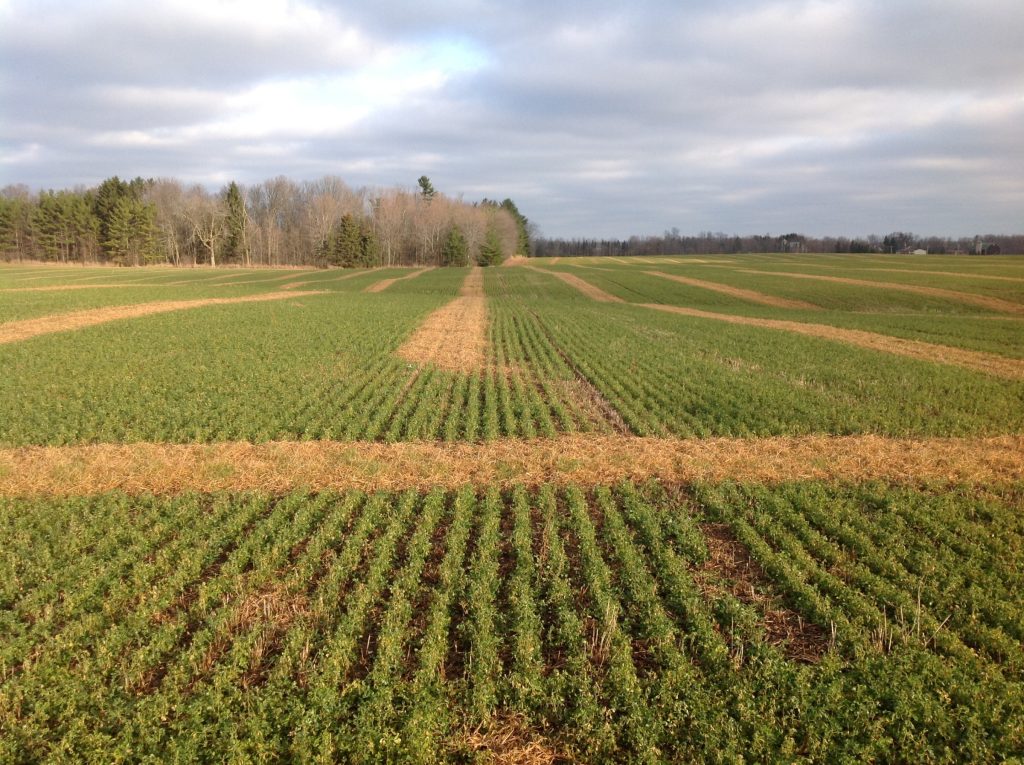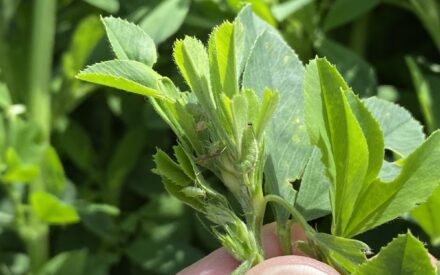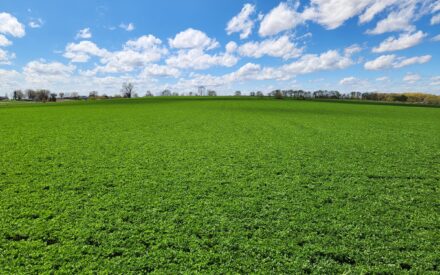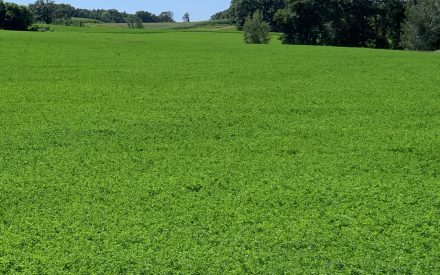A late summer seeding of alfalfa following a spring wheat crop is a great option to maximize seasonal productivity and fits very well as a part of a diverse crop rotation. Aside from the usual considerations when performing a late summer seeding of alfalfa, there are a few considerations to keep in mind when planting alfalfa following a wheat crop: the potential for residual herbicide damage to alfalfa and the impact of volunteer wheat.
Herbicide Carryover
Some herbicides applied for weed control in wheat can affect alfalfa establishment. Check here for herbicides of concern to alfalfa following wheat.
*Note: Herbicides with restrictions >15 months applied to corn and soybean the previous growing season can affect establishment success.

Volunteer Wheat Control
Competition from volunteer wheat, especially in combine windrows, can impact alfalfa establishment and subsequent productivity. Detrimental effects on alfalfa were seen in research trials when wheat made up more than 35% of biomass in spring harvests.
Timely fall management with effective herbicides can alleviate this competition. Apply herbicides when volunteer wheat is 4-6″ tall. Glyphosate on RoundUp-ready alfalfa and grass-specific herbicides in conventional alfalfa worked the best in research trials. Sethoxydim (Poast Plus) performed best of the grass herbicides tested.
See more details on herbicide efficacy from this UW research trial.

 ▶ Forage Insect Pest Update
▶ Forage Insect Pest Update ▶ Determining the Value of Standing Forage
▶ Determining the Value of Standing Forage First crop insect scouting in alfalfa
First crop insect scouting in alfalfa


